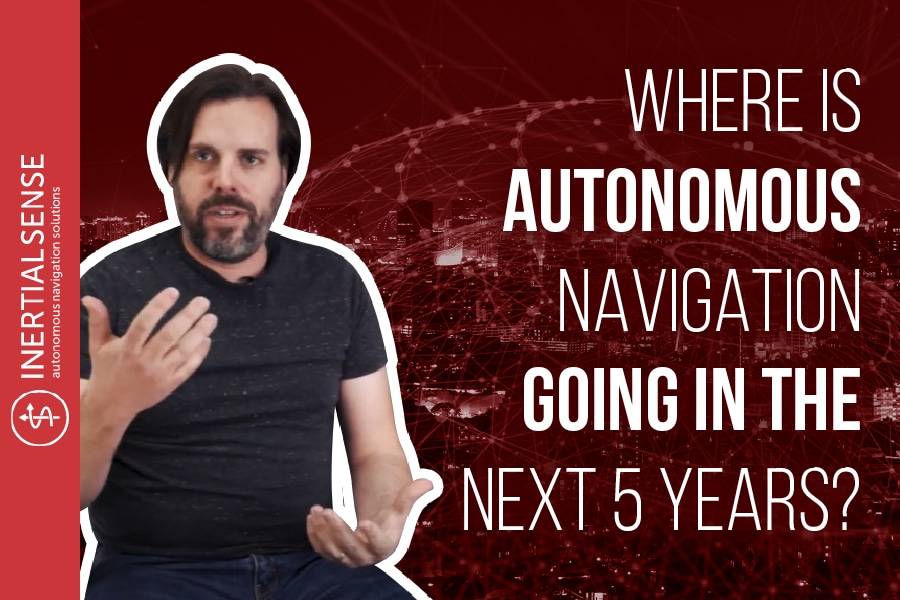
Where is Autonomous Navigation Going in the Next 5 Years?
What if you could have your groceries or take-out delivered by a driverless car? Or what if a package you ordered was delivered by a drone? Watch the video below as Joshua predicts where autonomous navigation is going in the next 5 years.
Autonomous navigation will become more natural in the coming years. We will start seeing more autonomous vehicles, such as cars on the road, which are already beginning to appear in the market, delivery robots, carts in your grocery store, agricultural machines, even lawn care machines.
For autonomy to be permitted to grow, it needs connectivity and security. Once robots achieve the capacity to communicate with one another, such as through a secure cloud platform, then that becomes more powerful, and we learn more and more about the world around us.
The mapping systems we currently have are due to autonomy making a stamp in the world. The more data we gather, the more accurate the mapping solutions become. The more data we can gather from the different sensors beyond any visual things we have already seen and gathered, the more accurate we will be when interacting with the world around us.
Autonomy is making its mark on becoming a formidable force. Contact Inertial Sense today for more on autonomy and other sensor information!
Learn More:
How Is The Field Surrounding Autonomous Robotics Advancing?
The Future of INS and Autonomous Navigation
What Does The Autonomous Robotic Landscape Look Like?
Video Transcript
I see autonomous navigation becoming much more ubiquitous in the next five, ten years. We will see more and more autonomous vehicles, whether it be like cars on the road, delivery robots, you know, carts in your grocery store, agricultural machines, and lawn care, you name it.
But one of the things that is going to be key in order for this to work together is connectivity and security. So if you just throw a bunch of robots out there, they each have their own limitations. But once these robots can start talking together, like through a cloud platform in secure ways, that they can start to interact not only with the world around them through all the sensors but with each other. Then that becomes a lot more powerful, and we learn more and more about the world around us the more robots we have out there.
Like for example, look at the mapping systems that we have. You know, we send out these cars that start taking pictures of things around us. Then, the more data we gather, the more accurate our mapping solutions are. It’s the same thing with autonomous vehicles. The more data we can gather from the different sensors beyond just some of the visual stuff that we’ve already gathered, the more accurate we’re going to be able to interface with the world around us, and the more that data is shared through a platform like the luna cloud platform, the more powerful it becomes as we have these fleets of robots that are navigating the whole world.

